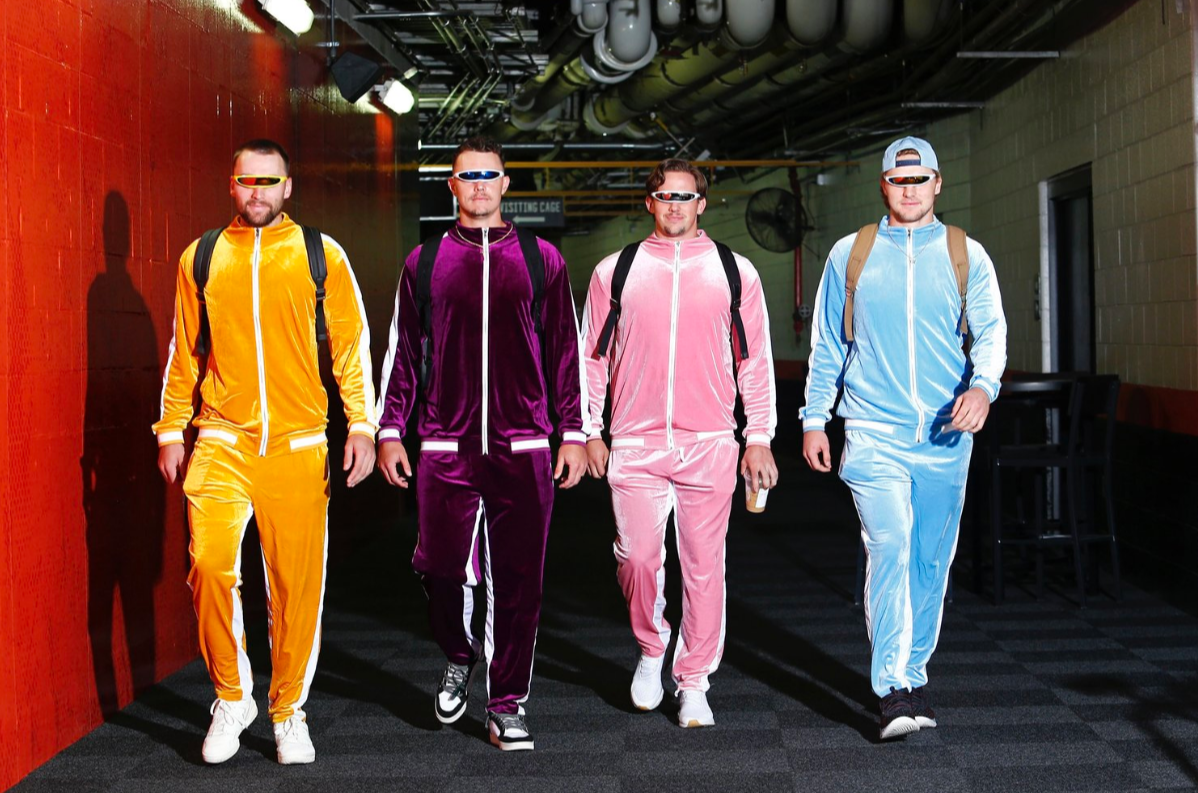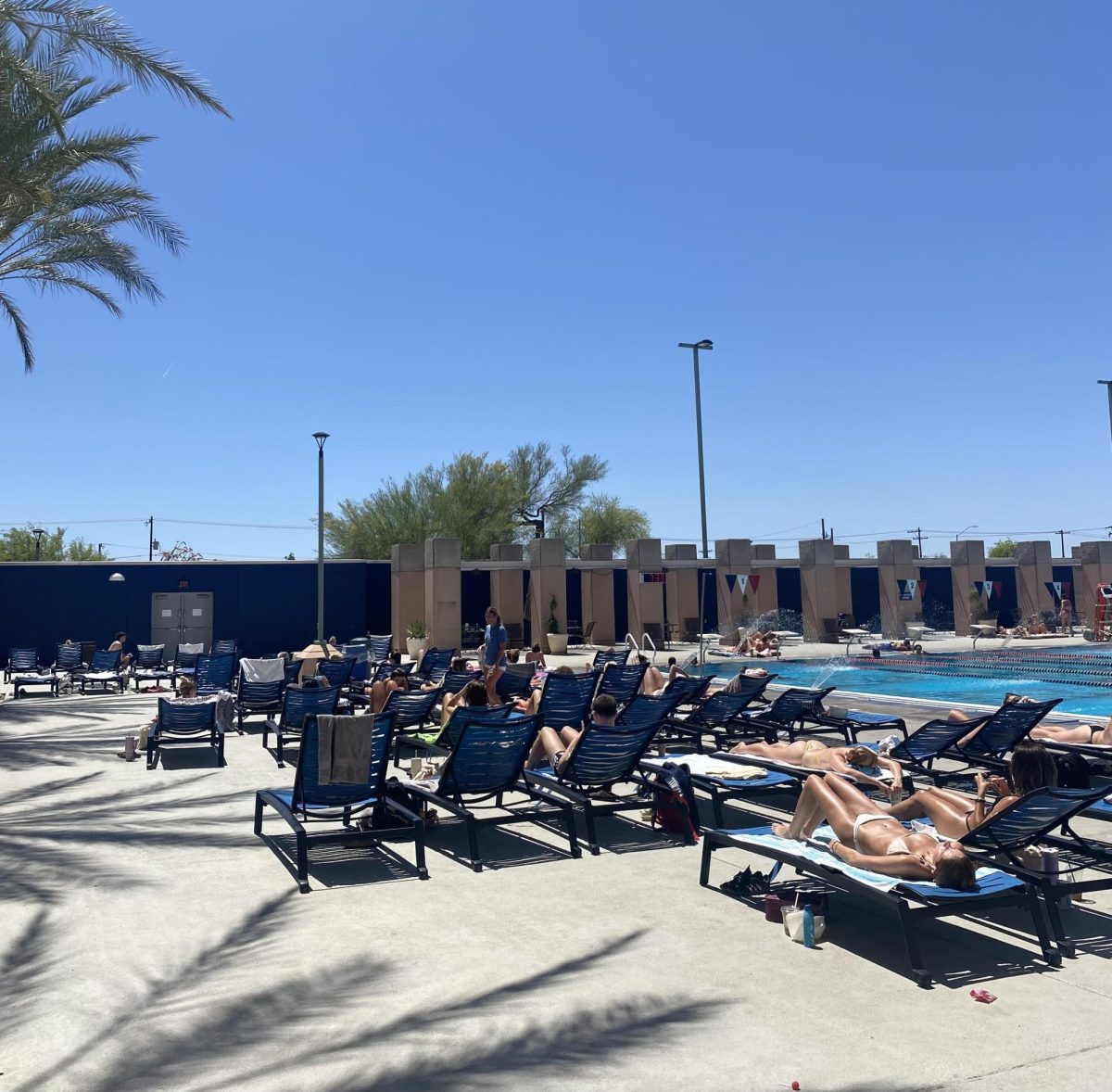In the fall of this year, NCAA conference realignment will be in full force, and the mental health effects for student-athletes due to this change has largely been left out of the conversation. This realignment, the process of collegiate athletic programs changing conference membership from the Pac-12 to the Big 12 due to financial, competitive and geographical incentives, will cause student-athletes to face different travel time commitments and fluctuations in their level of play.
Sport psychology is a field that addresses the well-being and performance of athletes from a mental standpoint, and it also concentrates on systemic issues in sports settings.
As the conference realignment takes place, sport psychology and its evolution will be important now more than ever. In 2007, the University of Arizona was one of the first five schools in the NCAA to hire a full time, embedded psychologist within athletics, according to Mike Clark, director of clinical and sport psychology at the UA. The UA’s department, along with departments around the country, have since grown drastically.
The impact of the conference realignment on student-athlete mental health
The prevention and treatment of mental health concerns is a main priority for sport psychology departments, and it is anticipated that a variety of mental health concerns will rise for student-athletes as a result of the conference realignment.
“I imagine sleep-related concerns will rise, which is generally associated with concerns related to stress management, depression, and maladaptive coping (substance use, numbing out etc.). Any number of these concerns only exacerbate other concerns [student-athletes] face (pressure to perform, injury management, NIL),” Clark said.
These changes will force the UA’s department to stay up to date on the most appropriate preventative and treatment strategies for the student-athletes.
Samantha Nagy, PhD student in the clinical psychology program and clinical extern in UA’s athletics department, works in the insomnia and sleep health research laboratory run by Daniel Taylor.
Nagy said student-athletes could be at a developmental stage, which refers to late adolescence to young adulthood that could affect sleep.
“That requires a higher sleep duration (for example, closer to 9 hours instead of 7-8) and predisposes them to have a delayed circadian preference (i.e., they want to go to bed later and wake up later),” Nagy said.
Nagy added that increased physical activity also requires more sleep. This sleep allows the body to repair itself and for learning and memory consolidation to take place. Social demands and access to technology for college athletes can also result in late nights.
Due to these factors, along with demands of early practices, classes and travel obligations, Nagy said it may be difficult for student-athletes to get proper amounts of sleep.
Nagy also said that there are “structural (education and emphasizing the importance of sleep at the department level) and individual (cognitive behavioral or brief behavioral therapy for insomnia) interventions that can help.” The acknowledgement of these interventions will be essential in providing the best care to student-athletes.
According to Mykal Manswell, commitment to athletes total success clinical & sport psychology counselor at UA and former Division I athlete, as teams compete for conference or national championships against new opponents next year, they may deal with the pressures to make a profound impact in the first year. This will also be a new stressor that will have to be dealt with by student-athletes and sport psychology departments.
Increased pressure on sports psychology departments
Different roles are present inside a sport psychology department. From a clinical sense, there are sport psychologists and licensed professional counselors, and their work lies in the prevention and treatment of mental health concerns.
“The prevention work may look like programming targeting education about healthy coping skills, mindfulness, etc, whereas treatment is usually 1:1 confidential mental health therapy,” Clark said.
From a non-clinical position, there are mental performance coaches, and their importance lies in improving performance through the training of mental skills, consulting with coaches and providing ways to improve cognitive elements of performance such as decision making and reaction time.
At the UA, all four full-time providers do work in the clinical and performance domains.
With this high demand and array of factors to address, the sport psychology department may face increased pressures as the conference realignment takes place.
“I expect to see an increase in service provision from sport psych which in turn puts pressure on other elements of my role (if I spend more time in the clinical domain, there is less time for performance related concerns). This could lead to expanding and hiring more providers and/or a shift in how my time needs to be allocated,” Clark said.
Manswell said the UA’s department will have to “adjust to a new conference’s perspective on mental health support for student-athletes.” They will also have to establish rapport with colleagues of over 12 schools, which is no easy feat.
Staying up to date with the needs of athletes amid a different environment will provide a challenge for the field in the upcoming years. Its evolution is becoming increasingly important, but the field has developed positively in recent years and shows great potential to continue to do so.
Sport psychology evolution
In 2013, a task force was created by the NCAA which led to having a licensed mental health provider to be available to athletics departments as best practice. Over the past 10 years, the day-to-day of sport psychology in college athletics has changed drastically.
“Where once a majority of the work was 1:1 clinical [mental health] therapy, it is now standard practice for sport psych’s to be included in the interdisciplinary meetings with physicians, athletic trainers, dieticians, strength & conditioning coaches, and academic support,” Clark said.
The tasks of sport psych have significantly increased. Clark said, “It is also more common for sport psych’s to attend practice, travel with teams, and be included in decisions with administrators.”
The UA now has a staff of four full time providers in addition to three interns and a network of community providers, according to Clark.
Manswell, who played college football at West Virginia University, said that his previous involvement in college athletics helps him relate to the lifestyle experiences of the current population of the department services.
“Being a support system allows us to destigmatize the negative narrative in athletics due to our clinical team members being former athletes as well,” Manswell said.
The department’s growth will be critical in Arizona Athletics’ transition to the Big 12. This will require student-athletes to compete against different and challenging competition with travel schedules becoming more cumbersome.
The consistency of the sport psychology department will help stabilize an ever-changing NCAA landscape. Despite money’s domination of the collegiate athletic experience, the student-athletes remain the ever-present priority for sport psychologists at the UA and across the country.
Follow the Daily Wildcat on Instagram and Twitter/X















